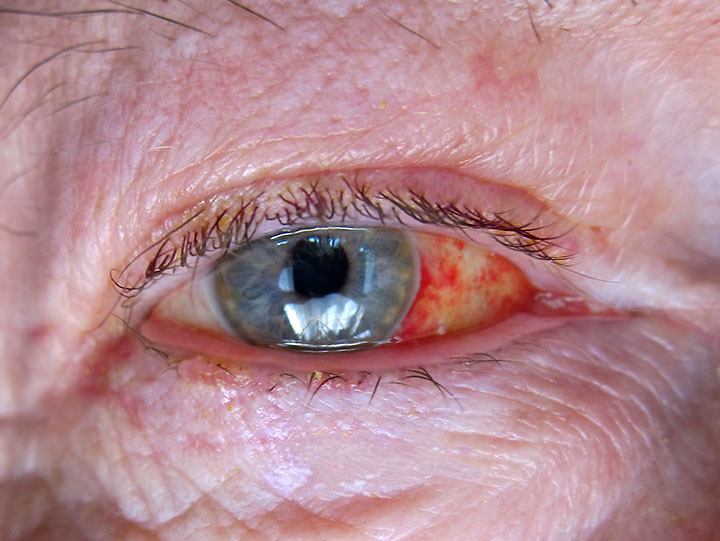 |
| My eye was well on its way to be healed when I took this picture. |
My granddaughter noticed it first. The white of my right eye appeared to be filling with blood. It looked nasty.
As I take the anticoagulant Pradaxa, bleeding in my eye was concerning. I headed off to the the ER at University Hospital in London, ON.
Moments after entering the ER I was interviewed, my OHIP information was taken and I was asked to sit down and await triage. A few short minutes later I was being interviewed by the triage nurse. She seemed remarkably calm about my bleeding eye. A good sign. She asked me to take a seat in the waiting room.
A notice in the waiting room warned the wait for a doctor was running anywhere from four to six hours. I took a seat, picked up a magazine and scanned it for something to read. Interesting, I thought, my right eye is filling with blood and yet my vision seems unaffected. Another good sign.
I hadn't waited even two hours when I my name was called and I was taken from the waiting room to a small examining room where I noted there was what appeared to be a slit lamp instrument. These have a support for the chin and a brace for the forehead. With the patient's head held steady, an optometrist or doctor can shine a bright light into the eye to conduct a careful examination.
Soon a nurse arrived and had me read an eye chart. This tests visual acuity. I did fairly well. There was certainly no big difference between my two eyes. Whatever was occurring in my right eye was not affecting the vision.
The nurse left and an ER doctor entered. He carefully noted the meds I take and seemed especially interested in the Pradaxa, the anticoagulant I take to lessen my risk of suffering a stroke. He looked at the results of my visual acuity test and then examined my eye using the slit lamp unit. He put drops in my eye and left to help someone else while the freezing took effect.
When he returned, he used a computerized pen-type instrument to gently touch the surface of my eye to get an accurate eye pressure reading. All was normal.
He had a diagnosis: Subconjunctival hemorrhage. According to the Mayo Clinic this is caused by a tiny blood vessel breaking just underneath the clear surface, the conjunctiva, of the eye. There is usually no pain and no visual problems associated with this despite the frightening appearance. The blood trapped below the transparent layer will usually disappear in a week or two. There is no specific treatment.
The ER doctor made it quite clear that if pain should develop or my vision become blurry, I should return to the emerg. I believe the Pradaxa was a bit of question mark hanging over this whole incident. When one is on a powerful anticoagulant, any bleeding is cause for immediate concern. That said, it did not appear my eye was bleeding all that profusely and the Pradaxa did not appear to be the cause of my problem nor did it appear to be making the event worse.
The doctor sent me home. I had been in the ER a total of four hours.
In the last few months, the ER department at our local hospital has come in for criticism in the local paper. With my own personal defibrillator in my chest, an ICD, with a pacemaker in charge of my heart rate about 93 percent of the time, with a rather rare genetic-based heart condition, I have made more than my share of visits to the ER in recent years. I have no complaints.
The medical staff in the ER have tough jobs. In my experience, they are an amazing group doing damn fine work. Part of the reason I am alive today is because of the fine work done by the doctors and nurses in hospital emergency departments.




No comments:
Post a Comment